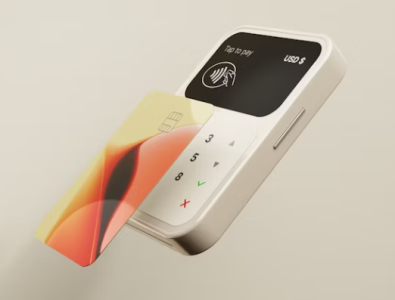“Ghost tapping” scam targets tap-to-pay users and steals money in seconds—here’s how to stay safe
- Replies 0
Tapping your phone or card to pay has become second nature for many shoppers, especially after the pandemic pushed people to embrace contactless options.
The speed and convenience of tap-to-pay have made it a favorite at grocery stores, retail chains, and just about anywhere that accepts modern payments.
But beneath that convenience lies a growing concern that criminals are exploiting.
A new scam called “ghost tapping” is quietly stealing money from unsuspecting consumers.
“Ghost tapping” sounds like something out of a haunted house, but it’s a very real and modern threat.
The term refers to a sneaky scam where criminals use wireless technology to steal money from your bank account—sometimes without you even realizing it.
Here’s how it works: Tap-to-pay systems (like Apple Pay, Google Pay, and contactless credit/debit cards) use a technology called NFC (Near Field Communication).
It’s what lets you pay by holding your device or card near a payment terminal. Unfortunately, scammers have figured out how to exploit this convenience.
With a portable card reader (the kind you see at small businesses or craft fairs), a thief can get close to you—say, in a crowded elevator, on public transit, or even in a busy store—and “tap” your phone or card through your pocket or purse.
If your device or card is set up for contactless payments and isn’t locked down, it can trigger a small transaction, siphoning off your hard-earned money in seconds.

Tap-to-pay has exploded in popularity, especially since the pandemic made us all a little wary of touching shared surfaces. But as more people use this technology, it’s become a bigger target for scammers.
The Better Business Bureau (BBB) and other consumer watchdogs have seen a rise in reports of “ghost tapping” and similar frauds.
Criminals are getting bolder and more creative, and the technology they use is getting cheaper and easier to find.
A portable card reader can be bought online for less than $100—no special skills required.
Also read: This Texas teen outsmarted scammers with a simple computer science trick
While anyone can fall victim to ghost tapping, older adults are often targeted because scammers assume they are less familiar with the latest tech. But don’t let them fool you!
You don’t have to give up the convenience of tap-to-pay. A few simple precautions can make a world of difference:
Also read: Think before you tap: Venmo mistakes that could cost you and simple privacy tricks everyone should know
Smartwatches and fitness trackers with tap-to-pay features are also vulnerable. The same rules apply: lock your device, disable tap-to-pay when not in use, and use RFID-blocking accessories if possible.
Read next:

Have you experienced ghost tapping or another tap-to-pay scam? Do you have tips for keeping your cards and devices safe? Or maybe you have questions about other tech topics?
The speed and convenience of tap-to-pay have made it a favorite at grocery stores, retail chains, and just about anywhere that accepts modern payments.
But beneath that convenience lies a growing concern that criminals are exploiting.
A new scam called “ghost tapping” is quietly stealing money from unsuspecting consumers.
“Ghost tapping” sounds like something out of a haunted house, but it’s a very real and modern threat.
The term refers to a sneaky scam where criminals use wireless technology to steal money from your bank account—sometimes without you even realizing it.
Here’s how it works: Tap-to-pay systems (like Apple Pay, Google Pay, and contactless credit/debit cards) use a technology called NFC (Near Field Communication).
It’s what lets you pay by holding your device or card near a payment terminal. Unfortunately, scammers have figured out how to exploit this convenience.
With a portable card reader (the kind you see at small businesses or craft fairs), a thief can get close to you—say, in a crowded elevator, on public transit, or even in a busy store—and “tap” your phone or card through your pocket or purse.
If your device or card is set up for contactless payments and isn’t locked down, it can trigger a small transaction, siphoning off your hard-earned money in seconds.

You might not even notice until you check your bank statement. Image source: Philip Oroni / Unsplash
Tap-to-pay has exploded in popularity, especially since the pandemic made us all a little wary of touching shared surfaces. But as more people use this technology, it’s become a bigger target for scammers.
The Better Business Bureau (BBB) and other consumer watchdogs have seen a rise in reports of “ghost tapping” and similar frauds.
Criminals are getting bolder and more creative, and the technology they use is getting cheaper and easier to find.
A portable card reader can be bought online for less than $100—no special skills required.
Also read: This Texas teen outsmarted scammers with a simple computer science trick
While anyone can fall victim to ghost tapping, older adults are often targeted because scammers assume they are less familiar with the latest tech. But don’t let them fool you!
You don’t have to give up the convenience of tap-to-pay. A few simple precautions can make a world of difference:
1. Use RFID-Blocking Wallets or Sleeves
These special wallets and card sleeves block the radio waves that scammers use to tap your cards. They’re inexpensive and widely available online and in stores.2. Lock Your Phone and Payment Apps
Always use a passcode, fingerprint, or facial recognition to lock your phone. Make sure your tap-to-pay app requires authentication for every transaction.3. Turn Off Tap-to-Pay When Not in Use
Most phones and some cards let you disable NFC or contactless payments. Only turn it on when you need it.4. Be Aware of Your Surroundings
In crowded places, keep your phone and cards in a front pocket or a bag that’s close to your body. Don’t leave them exposed or unattended.Also read: Think before you tap: Venmo mistakes that could cost you and simple privacy tricks everyone should know
5. Check Your Statements Regularly
Look for small, unfamiliar charges. Scammers often start with tiny amounts to see if you notice.6. Set Up Alerts
Many banks and credit card companies let you set up instant alerts for every transaction. If something fishy happens, you’ll know right away.7. Report Suspicious Activity Immediately
If you spot a charge you didn’t make, contact your bank or card issuer right away. The sooner you act, the better your chances of getting your money back.Smartwatches and fitness trackers with tap-to-pay features are also vulnerable. The same rules apply: lock your device, disable tap-to-pay when not in use, and use RFID-blocking accessories if possible.
Read next:
- Are you a PayPal user? Here's what you should know about the latest scam that could put your account at risk
- Is your Bank of America ATM withholding your cash? The invisible device you need to watch out for
- Don’t fall for these traps! Scammers are running a new “3-phase” hack that could drain your bank accounts fast
Key Takeaways
- The Better Business Bureau has issued a warning about “ghost tapping” and other tap-to-pay scams affecting Americans.
- “Ghost tapping” involves criminals using tap-and-go fraud schemes to steal money directly from your bank account.
- These scams can happen quickly and without much notice, making it important for customers to stay alert.
- The BBB recommends taking extra precautions when using tap-to-pay methods and keeping an eye on bank statements for any suspicious activity.






